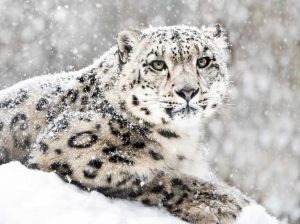Snow Leopard: WWE Report:

The World Wildlife Fund for Nature (WWF) has released a report titled “Over 100 Years of Snow Leopard Research — A spatially explicit review of the state of knowledge in the snow leopard range”.
Key findings:
- More than 70 per cent habitat of the snow leopard, over 12 Asian countries, remains unresearched.
- Nepal, India and China had conducted the most snow leopard research, followed by Mongolia and Pakistan.
- Despite a major research focus on snow leopard population assessments, less than three percent of the big cat’s range had robust data on abundance.
- Globally, there could be as few as 4,000 snow leopards left in Asia’s high mountains and this remaining population faces continued and emerging threats.
- Threats include Increased habitat loss and degradation, poaching, and conflict with communities.
- India has been conserving snow leopard and their habitat through the Project Snow Leopard (PSL).
- India is also party to the Global Snow Leopard and Ecosystem Protection (GSLEP) Programme since 2013.
- For conservation, India has identified three large landscapes, namely, Hemis-Spiti across Ladakh and Himachal Pradesh; Nanda Devi – Gangotri in Uttarakhand; and Khangchendzonga – Tawang across Sikkim and Arunachal Pradesh.
- Project Snow Leopard (PSL) was launched in 2009 to promote an inclusive and participatory approach to conserve snow leopards and their habitat.
- Snow Leopard is on the list of 21 critically endangered species for the recovery programme of the Ministry of Environment Forest & Climate Change.




